-
Is Your Downspout Causing Water in Basement Walls?
Is Your Downspout Causing Water in Basement Walls?
Water in your basement can be a homeowner’s nightmare, leading to structural damage and mold growth. One common yet overlooked cause of basement water issues is a faulty downspout system. Triad Basement Waterproofing in Gaithersburg, MD, offers expert solutions to help keep your basement dry and secure.
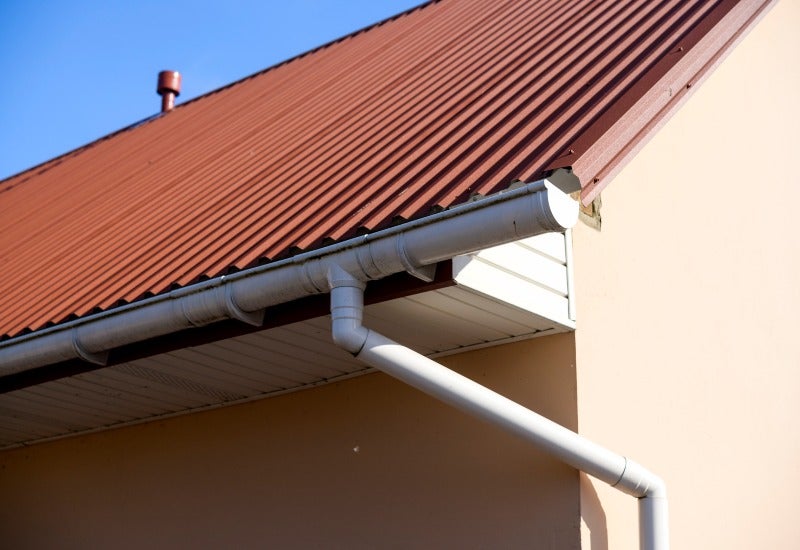
What is a Downspout?
A downspout is a vertical pipe attached to your gutters that directs rainwater away from your home’s foundation. It plays a vital role in your home’s drainage system by ensuring that water collected by the gutters is channeled safely away from the house. However, if the downspout is not functioning properly, it could cause water to pool around the foundation, leading to basement leaks and other water damage.
How Do Gutters and Downspouts Get Clogged?
Downspouts can become clogged with debris, such as leaves, twigs, and dirt. Over time, this buildup can prevent water from flowing freely through the system. When gutters and downspouts are clogged, water can overflow and accumulate near your foundation, eventually seeping into your basement walls.
Regular maintenance is essential to prevent clogs. Cleaning your gutters and downspouts at least twice a year can help maintain proper water flow and protect your basement from water damage. In some cases, installing gutter guards can also help reduce the frequency of clogs by keeping larger debris out of the gutters.
Methods for Preventing Water from Entering Your Basement
If you are dealing with water in your basement, several methods can help keep your space dry and protected:
Add a Basic Gutter with Planned Extensions
Installing a basic gutter system with planned extensions can significantly reduce the risk of basement water issues. Extensions should direct water at least five feet away from your home’s foundation. This simple addition can prevent water from pooling near the base of your home and seeping into the basement.
Restore the Crown Management
The crown of your yard refers to the slope of the ground around your home. The ground should slope away from the foundation to direct water away from the home. If the slope has become uneven or eroded over time, restoring the crown management can help prevent water from accumulating near your basement walls.
Repair the Footing Drains
Footing drains are installed around the perimeter of your foundation to direct water away from your home. Over time, these drains can become clogged or damaged, reducing their effectiveness. Repairing or replacing faulty footing drains can help ensure that water is properly diverted away from your basement.
Pump Out the Water
In cases of severe water accumulation, installing a sump pump can be an effective solution. A sump pump system collects water in a pit (sump basin) that pumps it out of the basement and away from your home. This method is particularly useful in areas with a high water table or frequent heavy rainfall.
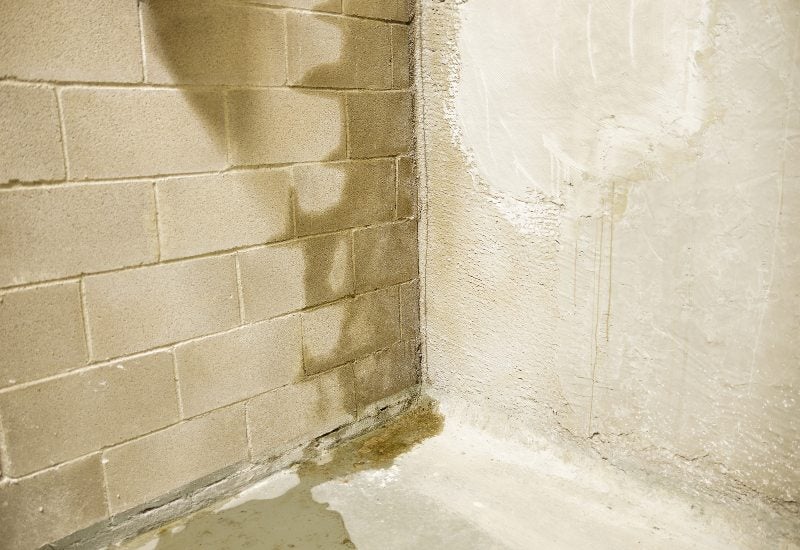
Waterproof the Upper Part of the Walls
Waterproofing the upper part of your basement walls can provide an additional layer of protection against moisture. Applying a waterproof coating or sealant to the exterior walls can help prevent water from penetrating the walls and causing damage.
Additional Preventive Measures
Beyond these primary methods, there are additional steps you can take to further protect your basement from water damage:
- Regular Inspections – Regularly inspecting your basement, gutters, downspouts, and surrounding landscape can help you identify potential problems before they escalate. Look for signs of water damage, such as damp spots, mold, or efflorescence (white powdery substance on walls).
- Install a French Drain – A French drain is a trench filled with gravel or rock, containing a perforated pipe that redirects surface water and groundwater away from the foundation. It can provide an effective way to manage water flow and prevent it from reaching your basement.
- Improve Ventilation – proper ventilation in your basement can help reduce humidity levels and prevent condensation, which can contribute to water damage and mold growth
Comprehensive Basement Waterproofing Solutions in Gaithersburg, MD
Water issues in your basement can cause significant problems if not addressed promptly. By understanding the role of downspouts and implementing effective solutions, you can safeguard your home against water damage. Triad Basement Waterproofing is here to assist you every step of the way, offering professional and reliable solutions tailored to your specific needs. Protect your home today and enjoy Peace of Mind knowing your basement is safe and dry.
Triad Basement Waterproofing in Gaithersburg, MD, is your trusted partner in basement waterproofing solutions. Our experienced team is dedicated to providing top quality services including gutter downspout maintenance, footing drain repairs, sump pump installation, and waterproofing solutions. Protect your home from water damage and maintain a dry, safe basement with our expert assistance.
Choose Triad Basement Waterproofing in Gaithersburg, MD
Contact us today to schedule a consultation and learn about how we can protect your home. Visit our website at Triad Basement Waterproofing to explore our services and discover why homeowners in Gaithersburg trust us for their waterproofing needs.
-
How Important Is A Battery Backup For My Sump Pump?
How Important is a Battery Backup for My Sump Pump?
A sump pump is a critical component of any home’s defence against basement flooding. Without it, your basement is at risk of water damage, mold growth, and structural issues. Triad Basement Waterproofing in Gaithersburg, MD, provides expert solutions to protect your home, including the installation and maintenance of battery backup systems for sump pumps.
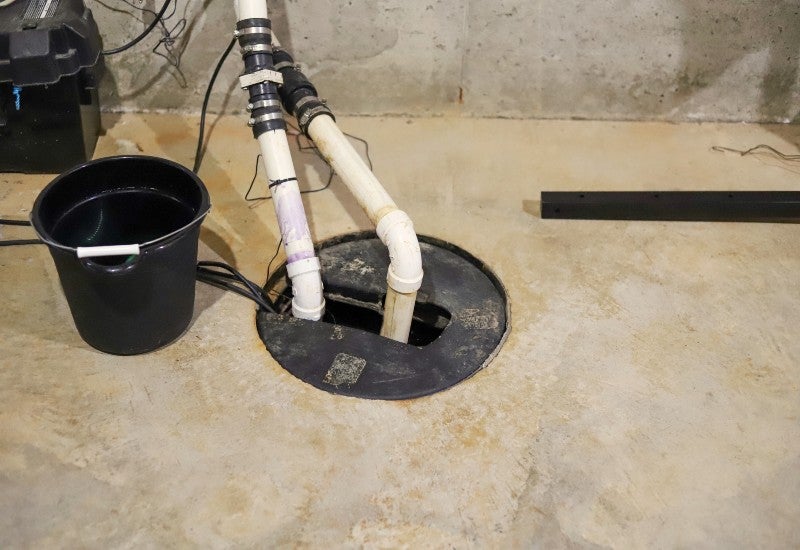
What is a Sump Pump System?
A sump pump system is designed to keep your basement dry by removing water that accumulates in a sump basin, usually located in the basement’s lowest part. The pump activates when the water level rises, expelling the water outside and away from your home’s foundation. This process helps to prevent flooding and moisture-related issues.
Does a Basement Foundation Require a Sump Pump?
Not every home has a basement, but for those that do, a sump pump is essential. Basements are prone to water infiltration due to their location below ground level. Factors such as heavy rainfall, high water tables, and improper drainage can lead to water entering your basement. A sump pump provides a safeguard by actively removing this water, protecting your home’s foundation, and preventing potential damage.
What Happens if a Sump Pump Failure Occurs?
Sump pump failures can happen for various reasons, including power outages, mechanical issues, or clogged discharge lines. When a sump pump fails, the water in the basin overflows, leading to basement flooding. This can cause significant damage to your home’s foundation, belongings, and overall structure. Addressing sump pump failures quickly is vital to minimize damage and repair costs.
Is a Battery Backup Sump Pump Right for My Home?
A battery backup sump pump is an additional pump that operates on battery power when the primary sump pump fails or during a power outage. This backup system is activated automatically, providing continuous protection against flooding. If your area is prone to power outages or your home has experienced sump pump failures in the past, a battery backup system is a smart investment.
How Do I Do Sump Pump Maintenance?
Regular maintenance of your sump pump system is necessary for its reliable operation. Here are some maintenance tips:
- Inspect and Clean – Check the sump basin and clean it regularly to prevent clogs.
- Test the Pump – Periodically pour water into the basin to ensure the pump activates and discharges water properly.
- Check the Power Source – Make sure the sump pump is connected to a functioning power source. Inspect the electrical connections for any signs of wear or damage.
- Inspect the Discharge Line – Check the discharge line to make sure it’s clear and free from obstructions and that it’s properly directing water away from your home’s foundation.
- Battery Maintenance – If you have a battery backup system, check the battery’s charge level and condition regularly. Replace it as needed to ensure it functions properly.
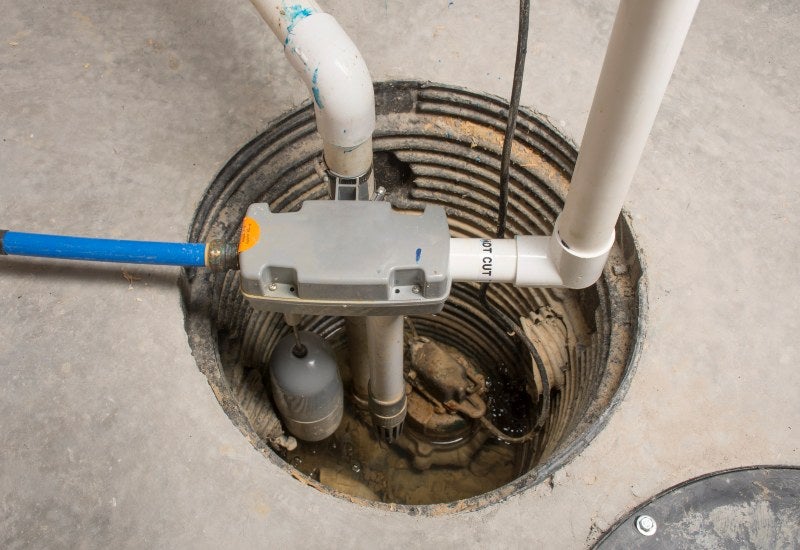
The Benefits of a Battery Backup Sump Pump
A battery backup sump pump offers several advantages that make it an essential addition to your home’s waterproofing system:
- Continuous Protection – During power outages or primary pump failures, the battery backup ensures your basement remains dry.
- Peace of Mind – Knowing you have an additional layer of protection against flooding provides peace of mind, especially during storms or heavy rainfall.
- Reduced Risk of Water Damage – A battery backup system helps prevent costly water damage and mold growth by maintaining a dry basement.
- Increased Home Value – Homes with reliable waterproofing systems, including battery backup sump pumps, are more attractive to potential buyers, enhancing property values.
Protect Your Home with Reliable Sump Pump Systems and Battery Backup Solutions
By understanding the importance of a sump pump system and the added benefits of a battery backup, you can take proactive steps to safeguard your home. Triad Basement Waterproofing is here to help you every step of the way, offering professional solutions tailored to your specific requirements.
Contact Triad Basement Waterproofing in Gaithersburg, MD
Triad Basement Waterproofing in Gaithersburg, MD, is your trusted partner for all your basement waterproofing needs. Our experienced team is dedicated to providing top-quality services, including the installation and maintenance of battery backup sump pumps. Protect your home from water damage, and ensure the longevity of your basement with our expert solutions.
Contact us today to schedule a consultation and learn more about how a battery backup sump pump can benefit your home. Visit our website at Triad Basement Waterproofing to explore our services and discover why homeowners in Gaithersburg trust us for their waterproofing needs.
-
How to Avoid Basement Flooding During Heavy Rain Seasons
Basement Flooding Repair Services in Gaithersburg, MD
How to Stop Basement Flooding with Triad Waterproofing
Restore peace of mind and security to your Gaithersburg, MD, home with Triad Basement Waterproofing’s specialized basement flooding repair services. As a seasoned industry leader with over 27 years of experience, we understand the urgency and complexity of addressing the aftermath of basement floods. Our dedicated team is equipped with the skills and tools to swiftly mitigate water damage, restore structural integrity, and prevent future flooding risks. Safeguard your property from the detrimental effects of water intrusion and ensure a dry and stable living environment. Contact us today to schedule a consultation and take the crucial step toward comprehensive basement flood recovery and prevention.
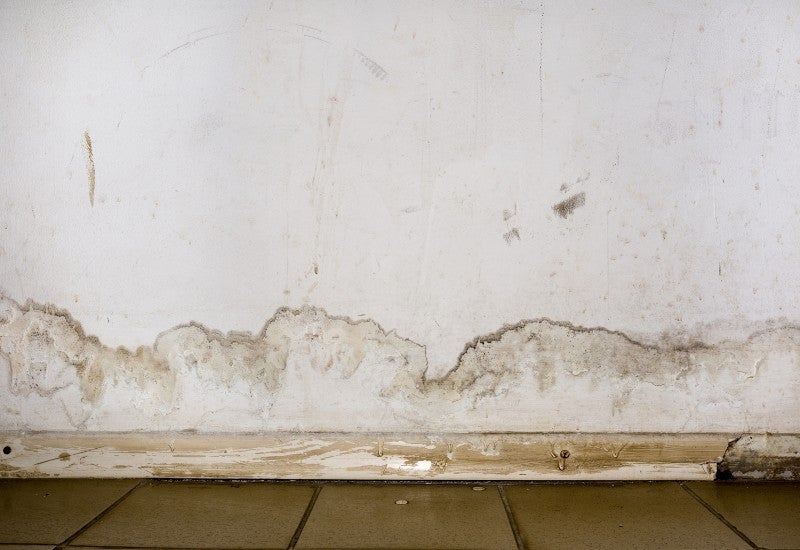
Common Causes of Basement Flooding
Understanding the common causes of basement flooding is crucial in implementing preventative measures to protect your property. Here are five frequent culprits contributing to basement flooding:
- Heavy Rainfall or Storms – Intense and prolonged rainfall can overwhelm drainage systems, causing water to seep into the basement through cracks, joints, or other vulnerable entry points.
- Poorly Functioning Sump Pump – A malfunctioning or overwhelmed sump pump can result in inadequate water removal, leading to water accumulation and potential flooding in the basement.
- Sewer Backup – Blocked or overloaded municipal sewer systems can cause sewage to back up into the basement, resulting in significant damage and health hazards.
- Foundation Cracks – Structural cracks in the foundation can create pathways for water to infiltrate the basement, especially during periods of heavy precipitation, leading to flooding and water damage.
- Improperly Installed or Clogged Gutters – Improperly installed or clogged gutters and downspouts can cause water to accumulate around the foundation, increasing the risk of basement flooding during heavy rainfall.
Top Signs of Basement Flooding
Recognizing the early signs of basement flooding is crucial in addressing potential water damage and implementing timely solutions. Here are five common indicators of basement flooding:
- Damp or Musty Odors – Noticeable musty or damp odors in the basement often indicate the presence of excessive moisture, suggesting potential water intrusion or flooding.
- Visible Water Stains – Water stains or discoloration on the walls, floors, or ceilings of the basement are clear signs of previous or ongoing water infiltration, indicating the possibility of basement flooding.
- Mold and Mildew Growth – The presence of mold or mildew on surfaces, such as walls, ceilings, or stored items, signifies a damp environment conducive to mold growth, indicating potential basement flooding or high humidity levels.
- Cracks In Walls or Floors – Newly formed cracks in the walls or floors of the basement can indicate structural shifts due to water pressure, suggesting potential water-related issues and the risk of basement flooding.
- Puddles or Standing Water – Noticeable puddles or standing water in the basement are direct indications of water intrusion, confirming the occurrence of basement flooding and the urgent need for mitigation measures.
How to Prevent Basement Flooding During Heavy Rain
Preventing basement flooding due to rain is essential for safeguarding your property against water damage. Here are five effective tips to help you mitigate the risk of basement flooding:
- Maintain Proper Gutter and Downspout Systems – Regularly clean and maintain gutters and downspouts to ensure proper water drainage away from the foundation, minimizing the risk of water accumulation around the basement.
- Install a Reliable Sump Pump System – Invest in a quality sump pump and regularly inspect and maintain it to ensure it functions effectively. This is a crucial safeguard against potential basement flooding during heavy rainfall or storms.
- Seal Cracks and Foundation Gaps – Identify and seal any cracks or gaps in the basement walls or foundation to prevent water from seeping in during heavy rainfall or flooding, minimizing the risk of water intrusion.
- Improve Yard Grading – Adjust the grading around your property to direct water away from the foundation, ensuring that surface water flows away from the basement and reducing the risk of water pooling and potential flooding.
- Consider Exterior Waterproofing – Implement exterior waterproofing measures, such as installing waterproof membranes and proper drainage systems, to create a robust barrier against water infiltration and reduce the risk of basement flooding during heavy rainfall or storms.
Contact Triad Basement Waterproofing
Reclaim the safety and resilience of your Gaithersburg, MD, residence with Triad Basement Waterproofing‘s efficient and effective basement flooding repair services. Our unwavering dedication to prompt action, combined with our extensive industry knowledge and customer-centric approach, ensures a swift and thorough recovery from basement floods during heavy rain. Bid farewell to the stress and uncertainty of water damage and trust in our tailored solutions to fortify your property against future flooding threats. Contact us now to schedule an assessment and take the vital step towards safeguarding your home from the perils of basement flooding. Count on Triad Basement Waterproofing to provide you with the peace of mind you need for a secure and protected living space.
-
5 Clear Signs Your Home Needs Foundation Waterproofing
Expert Home Foundation Waterproofing
Unlock comprehensive protection for your Gaithersburg, MD home with our foundation waterproofing services. Your home’s foundation is its backbone, and safeguarding it is paramount. Triad Basement Waterproofing specializes in providing top-tier foundation wall waterproofing solutions that shield your property from moisture, leaks, and potential damage. Contact us today to schedule a consultation and explore how our waterproof foundation services can benefit you.
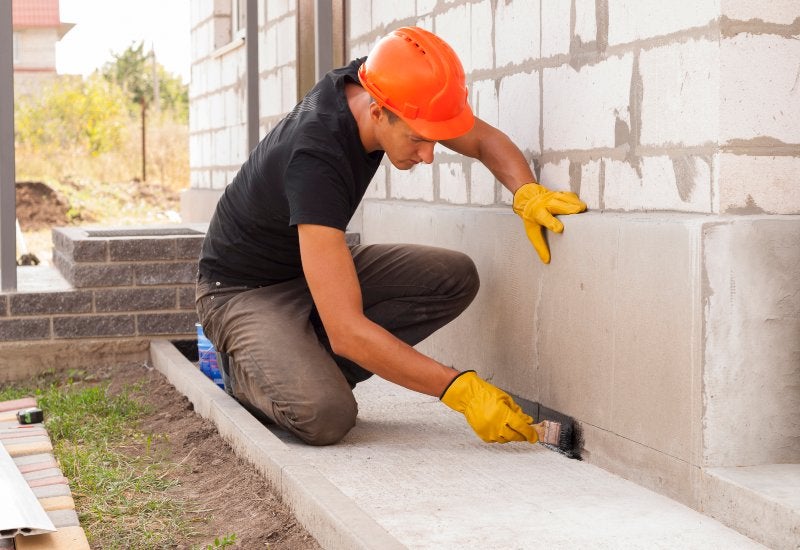
What Is Foundation Waterproofing?
Foundation waterproofing is a comprehensive process designed to protect a building’s foundation from water intrusion and moisture-related issues. This technique involves applying specialized waterproofing materials to the foundation walls’ exterior and/or interior to create a barrier against water penetration. The goal is to prevent groundwater, rainwater, and other forms of moisture from seeping into the foundation and causing problems such as leaks, cracks, and mold growth. Interior foundation waterproofing can encompass various methods, including coatings, membranes, drainage systems, and sealants, tailored to the specific needs of the building and its surrounding environment.
Signs Your Home Needs Foundation Waterproofing
Recognizing the signs that your home requires foundation waterproofing is essential to prevent water-related issues from escalating. Watch out for these indicators, which may signal the need for professional intervention:
- Visible Cracks – Noticeable cracks in the foundation walls or floor can indicate water pressure and infiltration, highlighting the necessity of waterproofing.
- Dampness or Mold – Moisture buildup, condensation, and mold growth in the basement or crawl space are strong signs that water is infiltrating the foundation.
- Efflorescence – White, chalky deposits on foundation surfaces often indicate water seepage, emphasizing the need for waterproofing.
- Musty Odors – A persistent musty smell in your basement can suggest the presence of excess moisture, necessitating waterproofing measures.
- Water Stains – Stains on basement walls or floors indicate past or ongoing water intrusion, underscoring the importance of addressing the issue.
- Bowing or Leaning Walls – Foundation walls visibly bowing, leaning, or tilting are likely compromised by water pressure and require waterproofing.
- Pooling Water – Standing water or puddles in the basement after rainfall or snowmelt suggest poor drainage and the potential for leaks.
- Rust or Corrosion – Rust on metal components such as support beams or fasteners indicates exposure to moisture, necessitating preventive measures.
- High Humidity Levels – Excessively humid indoor air can result from water infiltration, emphasizing the need for proper waterproofing to regulate moisture.
- Decreased Energy Efficiency – Escalating energy bills due to excessive humidity, dampness, or inefficient heating and cooling systems can result from inadequate waterproofing.
Top Benefits of Home Foundation Waterproofing
Waterproofing house foundation services offer a range of benefits that extend beyond the immediate protection of your home. This essential practice safeguards your property’s structural integrity and overall living environment. Explore the advantages below:
- Prevents Water Damage – Waterproofing shields your foundation from water infiltration, preventing costly damage such as cracks, leaks, and deterioration.
- Mold Prevention – Waterproofing minimizes the conditions that foster mold and mildew growth by keeping moisture at bay, enhancing indoor air quality.
- Extended Foundation Lifespan – A dry foundation is less prone to wear and erosion, leading to a longer-lasting and more durable foundation structure.
- Increased Home Value – A waterproofed foundation adds value to your property by assuring potential buyers of a well-maintained and protected structure.
- Healthier Indoor Environment – Waterproofing reduces the risk of mold-related health issues, creating a safer and more comfortable living space for you and your family.
- Energy Efficiency – A dry foundation promotes better temperature regulation, which can lead to energy savings by allowing heating and cooling systems to function optimally.
Contact Triad Waterproofing Today
Safeguard your Gaithersburg, MD residence with the unmatched excellence of Triad Basement Waterproofing‘s foundation waterproofing services. Our team‘s unwavering commitment to quality ensures that your property’s foundation remains impervious to moisture, preserving its strength and value for years. Don’t allow water to compromise the core of your home. Connect with us today to arrange a consultation and proactively fortify your foundation.
-
Basement Drainage System Services in Gaithersburg, MD
We Specialize in Inspecting Basement Drainage Systems
Experience dry and problem-free basements with our expert basement drainage system services in Gaithersburg, MD. Put an end to water woes and safeguard your property from potential damage. Triad Basement Waterproofing specializes in creating effective and efficient drainage solutions that keep your basement dry and your worries at bay. Contact us today to schedule a consultation and discover how we can transform your space.
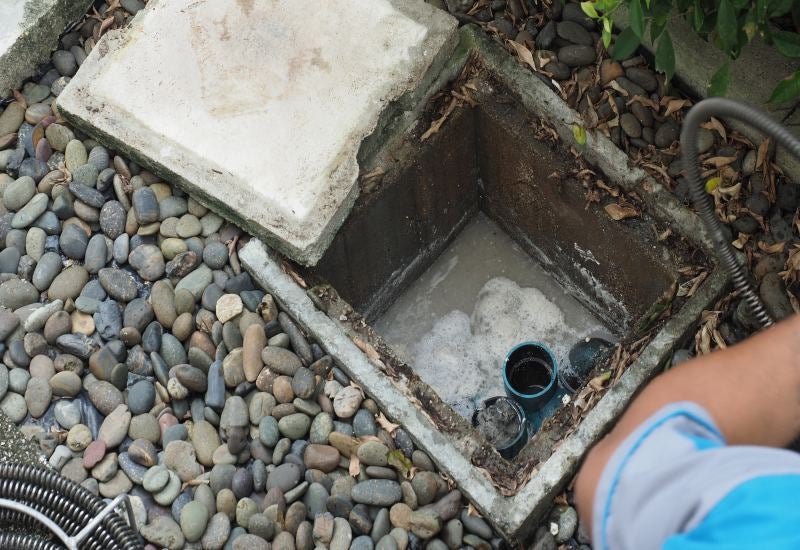
What Is a Basement Drainage System Inspection?
A basement drainage system inspection involves thoroughly assessing your property’s drainage infrastructure to identify potential issues and ensure its effectiveness in managing water. Our experts at Triad Basement Waterproofing examine components like sump pumps, drains, and waterproofing systems to determine if they function optimally. By identifying any weaknesses or areas of concern, we can address them proactively, preventing water damage, mold growth, and other issues that can compromise the integrity of your basement.
Why is Basement Inspection So Important?
A house basement drainage system inspection holds paramount importance in maintaining your home’s structural integrity and overall health. Over time, drainage systems can experience wear and tear, compromising functionality and potential water-related issues. Regular inspections by professionals like Triad Basement Waterproofing help identify hidden problems such as clogs, leaks, or deteriorating components. Addressing these concerns promptly prevents water accumulation, mold growth, and potential damage to your basement and its contents.
Causes of Water Intrusion in the Basement
Understanding the causes of water intrusion in the basement is essential to prevent and address potential issues effectively. Various factors can contribute to unwanted moisture. Explore the common culprits below:
- Poor Grading – Improperly sloped landscaping around the foundation can lead to water pooling against the basement walls, increasing the risk of leaks.
- Cracks in Foundation Walls – Structural cracks can allow water to seep through the foundation, leading to moisture buildup and potential flooding.
- Inadequate Waterproofing – Insufficient or deteriorating waterproofing materials can fail to create a barrier against groundwater penetration.
- Faulty Gutters and Downspouts – Improperly functioning gutters and downspouts can direct rainwater toward the foundation, causing water to infiltrate the basement.
- Sump Pump Malfunctions – A malfunctioning sump pump or an absent one can result in poor basement drainage, leading to flooding.
- Window and Door Leaks – Poorly sealed windows and doors can allow rainwater to enter the basement, contributing to dampness and mold growth.
- Plumbing Leaks – Leaking pipes or plumbing fixtures within or near the basement can introduce moisture and cause water intrusion.
Prevention Methods for Water Intrusion in the Basement
Shielding your basement from water intrusion requires proactive prevention methods to maintain a dry and secure space. Discover the strategies below that can safeguard your home against potential moisture-related issues:
- Proper Grading – Ensure proper landscaping slopes away from the foundation to direct water away from the basement walls, minimizing the risk of water accumulation.
- Foundation Sealing – Apply a quality waterproofing sealant to foundation walls to create a barrier against water infiltration through cracks and pores.
- Regular Gutter Maintenance – Keep gutters and downspouts clean and properly positioned to channel rainwater away from the foundation, reducing the likelihood of basement leaks.
- Sump Pump Maintenance – Regularly inspect and maintain your sump pump to ensure it’s functioning correctly, efficiently removing water from the basement.
- Window and Door Sealing – Properly seal windows and doors to prevent rainwater from seeping through gaps and joints, helping to keep your basement dry.
- Interior Drainage Systems – Consider installing an interior drainage system that collects and redirects water away from the foundation, reducing the risk of water intrusion.
- French Drains – Installing French drains around the perimeter of the foundation can effectively divert groundwater away from the basement walls.
- Foundation Ventilation – Ensure adequate ventilation to prevent condensation buildup, which can lead to dampness and mold growth.
Contact Triad Waterproofing Today for Immediate Assistance
Secure the future of your Gaithersburg, MD home with Triad Basement Waterproofing‘s unparalleled basement wall drainage system services. Say goodbye to dampness, mold, and potential structural issues, as our expert team ensures your basement remains dry and protected. We take pride in our commitment to quality and our ability to deliver results that stand the test of time. Contact us now to schedule a consultation and take the proactive step towards a waterproofed basement that truly adds value to your life and home.
-
How To Keep Your Crawlspace Dry
Crawlspace Moisture Control in Gaithersburg, MD
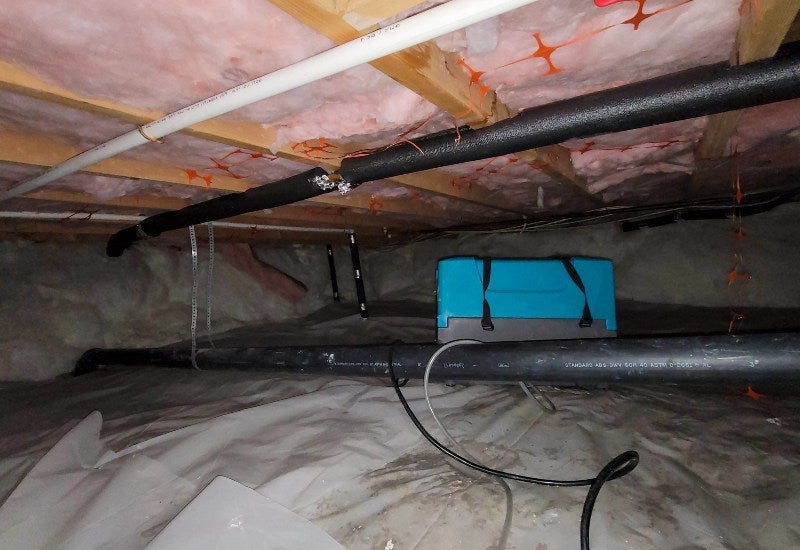
Count on Us to Keep Your Crawlspace Dry
A damp and moisture-laden crawlspace can lead to many problems, including mold growth, structural damage, and compromised indoor air quality. Triad Waterproofing is here to help you keep your crawlspace dry and protected in Gaithersburg, MD. With our expert knowledge and comprehensive solutions, we address the root causes of crawlspace moisture, ensuring a healthier living environment for you and your family. Don’t let a wet crawlspace affect the integrity of your home. Contact Triad Waterproofing today and take the first step toward a dry crawlspace.
What Is a Crawlspace?
A crawl space is a shallow, unfinished area typically found beneath a house, providing access to plumbing, electrical systems, and sometimes HVAC equipment. It is called a “crawl” space because the limited height makes it necessary to crawl or crouch while moving within the space. Crawl spaces are typically ventilated and serve as an alternative to basements in homes where a full basement is not feasible or necessary.
Causes of Excessive Crawlspace Moisture
Various factors can cause excessive crawlspace moisture. Some of the main causes include:
● Poor Ventilation – Inadequate airflow and ventilation in the crawlspace can lead to moisture buildup. Without proper ventilation, humid air gets trapped, increasing the moisture levels in the crawlspace.
● Water Intrusion – Water seepage through foundation cracks, plumbing leaks, or inadequate drainage systems can introduce moisture into the crawlspace. Poor grading around the house, improper gutter, and downspout systems can also contribute to water intrusion.
● High Humidity – Areas with high humidity levels can result in high moisture content in the crawlspace. Moisture from the surrounding soil and groundwater can evaporate, raising humidity levels and increasing the risk of condensation and moisture-related issues.
● Plumbing Issues – Leaking pipes or plumbing fixtures in the crawlspace can contribute to excessive moisture. Condensation from pipes can also be a source of moisture if they are not properly insulated.Why Moisture is Not Good for Your Crawlspace
Moisture is not good for your crawlspace. In fact, it can cause significant harm. Excessive moisture in the crawlspace creates an ideal environment for mold growth, which can lead to health issues and structural damage. Mold thrives in damp conditions and can spread quickly, releasing spores that can contaminate the air you breathe. Additionally, moisture can cause wood rot, compromising the structural integrity of your home. It can also attract pests like termites and contribute to the deterioration of insulation and other materials. Therefore, it is essential to promptly address moisture issues in your crawlspace and implement proper moisture control measures to protect your home and ensure a healthy living environment.
How to Keep Your Crawl Space Moisture-Free
Maintaining a moisture-free crawl space is vital for the overall health of your home. Here are some practical tips from our experienced team to help you dry a wet crawlspace:
● Inspect for Damage and Repair – Regularly inspect your crawl space for any signs of damage or moisture intrusion and promptly address any issues to prevent further moisture problems.
● Make Sure Your Foundation Is Insulated – Properly insulating the foundation walls of your crawl space can help regulate temperature and reduce the risk of condensation and moisture buildup.
● Get a Dehumidifier – Installing a dehumidifier in the crawl space helps to control humidity levels and prevent excess moisture from accumulating.
● Drain Your Crawl Space Better – Ensure proper drainage around your home by redirecting downspouts away from the foundation and grading the soil away from the crawl space to prevent water pooling.
● Cover the Floor of Your Crawl Space – Use a vapor barrier or moisture-resistant material to cover the crawl space floor, preventing moisture from the ground from seeping into the space.
● Use a Fan – Increase air circulation in the crawl space by using a fan, which helps to reduce moisture and prevent stagnant air.Contact Triad Waterproofing Experts for Help
Triad Waterproofing is your trusted partner in keeping your crawlspace dry and protected in Gaithersburg, MD. Our comprehensive crawlspace dehumidifier solutions, backed by years of experience and expertise, ensure your home remains free from moisture-related issues. From crawl space encapsulation to efficient drainage systems, we offer tailored solutions addressing your crawlspace moisture problems. Don’t let a damp crawlspace compromise the integrity of your home any longer. Contact us today to schedule your consultation.
-
Signs You Could Have Black Mold in Basement
Black Mold Removal Services in Gaithersburg, MD
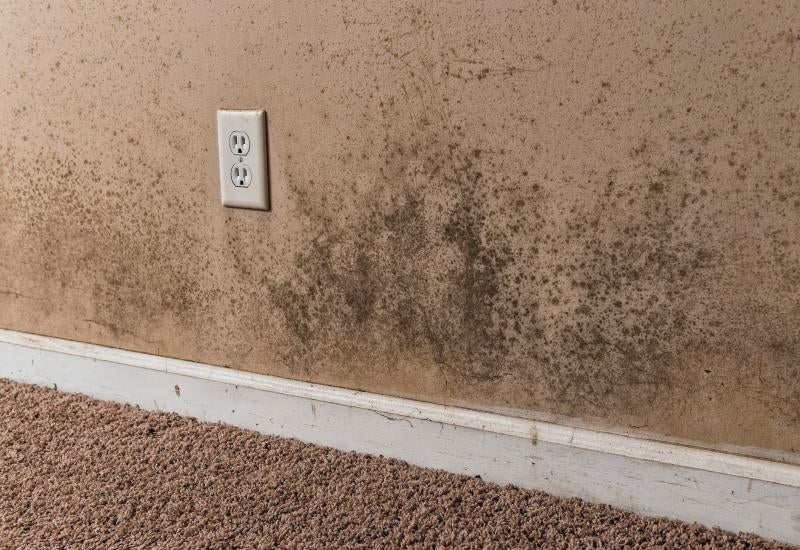
We Specialize in Black Mold Removal
Say goodbye to the hazardous black mold in your Gaithersburg home with Triad Waterproofing’s professional black mold removal services. Our skilled team of experts specializes in identifying and safely eliminating black mold in your basement, restoring the cleanliness and safety of your living space. With years of experience and advanced techniques, we ensure thorough and effective mold removal, leaving no room for compromise. Contact Triad Waterproofing and let us handle your black mold concerns precisely and carefully.
What Is Black Mold?
Black mold, scientifically known as Stachybotrys chartarum, is a toxic mold commonly growing in damp and humid environments. It appears as dark greenish-black patches or spots on surfaces such as walls, ceilings, and other organic materials. Black mold releases spores into the air, which can be inhaled and pose potential health risks to humans. Exposure to black mold can lead to various symptoms, including respiratory issues, allergic reactions, skin irritation, and in some cases, more severe health problems. It is important to address black mold promptly and seek professional assistance for its safe removal and remediation.
How Serious Is Black Mold in the Basement?
Black mold in the basement is a serious concern that should not be taken lightly. Basements are often prone to moisture problems, which create an ideal environment for mold growth, including black mold. Here are some reasons why black mold in the basement is considered serious:
● Health Risks – Black mold releases spores into the air, which can cause various health issues when inhaled. Exposure to black mold can trigger allergic reactions, respiratory problems, asthma attacks, and other respiratory symptoms. Prolonged exposure or individuals with compromised immune systems may experience more severe health complications.
● Structural Damage – Black mold thrives on organic materials such as wood, drywall, and insulation. As it grows and spreads, it can gradually deteriorate the structural integrity of your basement. Black mold on your basement floor can weaken the materials, leading to rot, warping, and potential structural damage. This can impact the stability of your home’s foundation and pose safety risks.
● Spread to Other Areas – Mold spores are microscopic and easily dispersed through the air or by attaching to clothing and objects. If not addressed promptly, black mold in the basement can spread to other areas of the house, contaminating additional spaces and making mold remediation more challenging and costly.
● Property Value – Black mold on basement walls can significantly impact the value of your property. The presence of mold and the associated health and structural risks may deter potential buyers. Addressing mold problems promptly is crucial for preserving the value of your home.Signs of Black Mold
Identifying the presence of mold in your basement is crucial for maintaining a healthy living environment. Here are some common signs our experienced team is trained to look out for:
● Water Puddles on the Basement Floor – Puddles on the basement floor indicate a potential water intrusion issue, which can create a conducive environment for mold growth if not addressed promptly.
● Damp Spots on Basement Walls – Damp spots or discoloration on basement walls often indicate excessive moisture or water seepage, leading to mold growth if the underlying cause is unresolved.
● Musty Smells – Musty odors in the basement are often a clear indication of mold presence. The characteristic earthy or mildew-like smell suggests an active mold infestation that requires immediate attention and remediation.
● Mold Patches – Visible mold patches, such as dark or fuzzy growth on surfaces, are a direct sign of mold infestation. These patches should be treated seriously and addressed promptly to prevent mold spread and potential health risks.
● Condensation in the Basement – Excessive condensation on windows, pipes, or other surfaces in the basement indicates high humidity levels. Persistent condensation can contribute to mold growth, and steps should be taken to improve ventilation and control moisture levels.Contact Triad Waterproofing for Quick Help
At Triad Waterproofing, we prioritize the safety and well-being of our customers in Gaithersburg, MD. Our black mold removal services are designed to eliminate the risks associated with this harmful substance and restore a healthy living environment. With our expertise, state-of-the-art equipment, and commitment to excellence, you can trust us to eliminate black mold in your basement with precision and care. Don’t let black mold compromise the health of your loved ones or the structural integrity of your home any longer. Contact Triad Waterproofing today.
-
Understanding the Top 3 Basement Waterproofing Methods
Understanding the Top 3 Basement Waterproofing Methods
There are few things worse for a homeowner than a wet basement. What appears to be just a tiny trickle or small puddle are the warning signs of a much bigger problem. Moisture in your basement can lead to an array of costly and time-consuming repairs. From structural damage to toxic mold, water in your basement is a serious problem. So what can we do to keep our basements dry and prevent moisture from making its way in?
Check out our top 3 basement waterproofing methods below to learn more.
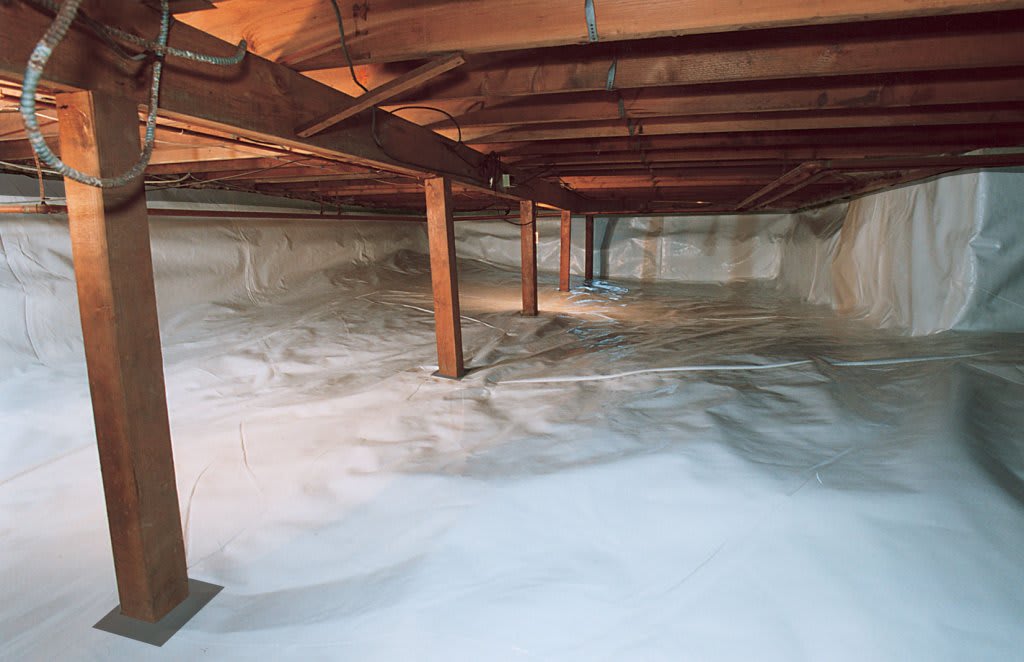
What Causes Basement Moisture?
To best understand how to keep your basements dry, we need to have a thorough understanding of what causes moisture to occur in basements in the first place. Unfortunately for homeowners, water has a knack for finding its way into our homes. Due to the unique nature and construction of basements, these spaces are particularly prone to wetness. The points below highlight some of the primary causes of basement moisture:
-
Improper Soil and Drainage Systems:
If rain and groundwater cannot drain away properly it can make its way into your basement. Improper soil and poor drainage systems are one of the most common causes of basement wetness. If water isn’t directed away from the home, it will accumulate around the foundation, where it will try to find a way inside.
-
Poorly Installed and Maintained Gutters:
Gutters are intended to direct rainwater away from your foundation. If they are improperly installed or too clogged to function, water will drain around your foundation, rather than away from it.
-
Improper Slope:
The ground around your foundation should slope away from your home, not towards it. If the slope is wrong, water will accumulate around your foundation, rather than running away from it.
-
Hydrostatic Pressure:
Hydrostatic pressure occurs when water accumulates around your foundation. As gravity pushes down on that water, it will try to escape, in an effort to relieve that pressure. The water will force its way through any cracks in your basement walls and floors. In fact the pressure can get so strong, that it will cause cracks.
-
Cracks in Your Basement:
Cracks in your basement walls, floors, and around windows or doors provide the perfect avenue through which water can flow. Water will always follow the path of least resistance and these cracks make it easy for water to come inside.
-
Condensation:
Basements are notoriously damp places. When condensation occurs, it can bring mildew, mold, and potential damage along with it.
The list above is just a basic overview of the causes of basement moisture. To learn more about the causes behind basement moisture, click here to read our blog post about the subject.
The Top 3 Basement Waterproofing Methods
Now that we have a better understanding of what causes basement moisture, let’s talk about what we can do to prevent it. There are 3 methods to basement waterproofing:
#1. Interior
These are steps that can be taken to keep water out of your basement from the inside. These methods are often used after an existing problem has been identified. This can include sealants and coatings, as well as methods to prevent condensation.
#2. Exterior
As you would expect, these are methods that take place on the outside of your home. The goal with these methods to block water from ever making its way inside in the first place. This can include exterior drainage systems and coating the exterior walls with a waterproof barrier.
#3. Drainage
Drainage issues are one of the most common causes of basement moisture. This method can include repairing a poorly functioning drainage system, or adding a drainage system if there isn’t one in place.
Each situation is different, so it is important to have a good understanding of what waterproofing issues are present in your home. A truly effective waterproofing system will utilize all 3 methods.
Now let’s take a closer look at each of the 3 waterproofing methods and learn more.
Interior Waterproofing
Interior waterproofing methods are typically the easiest and most affordable. These typically begin with ensuring that any cracks or holes in your basement walls, floors, and around windows and doors, are properly sealed and watertight. Water most frequently makes its way into our basement via these cracks, so properly sealing them is the first step towards ensuring your basement stays dry. Special sealants can be used to effectively fill any cracks, preventing any new moisture from traveling inside. These sealants are typically quite effective and often come with extended warranties, guaranteeing their effectiveness.
Interior waterproofing methods, such as waterproof sealants, also do a good job at keeping humidity levels down, preventing condensation. These coatings can be put onto basement walls and floors creating a waterproof barrier. While these interior sealants are an important step in the overall waterproofing process, they do not address the underlying problems causing the moisture. The bigger problems are usually found on the outside.
Exterior Waterproofing
When it comes to wet basements, the root of the problem is typically located outside of the home. So when it’s time to waterproof your basement, it is important to look outside of your basement walls. Exterior waterproofing is typically a much larger undertaking than the simple sealing process we use on the inside. It is a good idea to consult a professional when considering exterior waterproofing methods.
Exterior waterproofing typically requires the excavation of the soil surrounding the foundation of the home. As you can imagine, this can be a labor-intensive process, requiring heavy tools and machinery. Once all the soil around the foundation has been removed, a waterproof sealant can be applied to the exterior walls. This sealant is typically a polymer base, which should last for the life of the building. Ideally, this exterior waterproofing process should occur during construction.
It is also important to mention gutter systems when discussing exterior methods. When properly installed, gutters direct rainwater away from the foundation of your home. However if not properly installed or maintained, these systems can have the opposite effect. Clogged gutters or gutters that drain to close to your foundation will deposit water along the base of your home, exactly where you do not want it be. Make sure to keep your gutters clean and free of debris to keep them working properly. Ensure you have proper downspouts that direct water as far away from your home as possible.
Drainage Systems
Drainage problems are often the underlying cause of moisture in your basement. Having proper drainage around your home is essential if you want to keep your basement dry. The goal of these drainage systems is to direct water (whether it be groundwater or rainwater) away from the foundation of your home. There are numerous different drainage systems available to help control the water around your home. To start, you should examine the soil around your house. Different types of soil drain in different ways. Be sure your home is surrounded by soil that drains easily and does not retain moisture.
Each home is different, so be sure to thoroughly examine how the drainage around your home is functioning. Take a look at the slope of the ground around your foundation. It should slope away from your foundation, not towards it. Depending on your specific situation, it may be necessary to install a sump pump to collect water from the inside and pump it away. These interior drainage systems collect water from around your foundation and pump it out away from your basement.
These systems should be designed to function in case of a power outage. As one might imagine, installing a sump pump or other interior drainage system can be quite the undertaking. It is advisable to consult a professional when considering this type of waterproofing method.
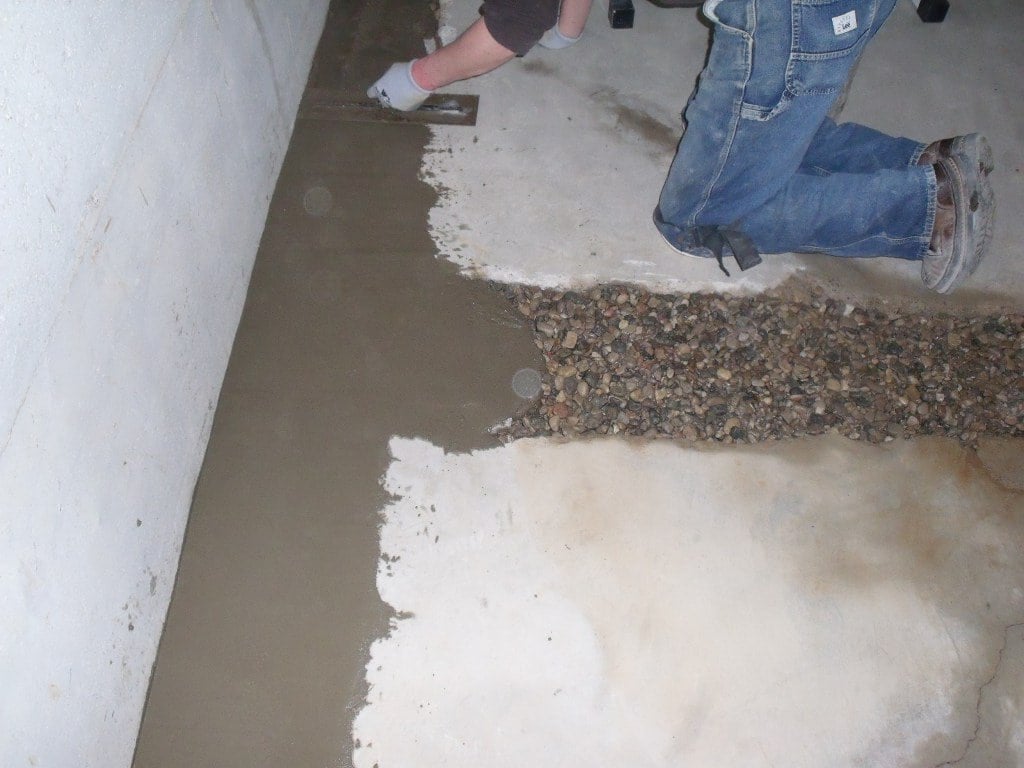
Which Method is Right for You?
As we mentioned earlier, each home is different. Thus the best waterproofing method for your home may be different than of your neighbor. There are so many factors that come into play when it comes to keeping your basement. While each situation is different, the best policy is always prevention rather than repair. Taking steps to waterproof your basement before water is present is sure to yield the best results. Water damage can cause major problems, resulting in costly repairs and lots of headaches.
While it is often tempting to save money now by ignoring the problem, waiting to address your basement waterproofing can lead to much bigger bills in the future. Basement waterproofing methods can vary greatly, so be sure to do your research and find out what method is the most appropriate for your unique situation.
Your home is your biggest investment. It is important to take the necessary steps to protect it. Don’t wait until you have a problem to do something about it. Taking preventative measures can keep your basement dry and your pockets full. Reach out to our experienced team at Triad Basement Waterproofing to learn more about keeping your basement dry this winter. Contact us today!
-
-
6 Causes of Basement Moisture (and How to Fix Them)
6 Causes of Basement Moisture (and How to Fix Them)
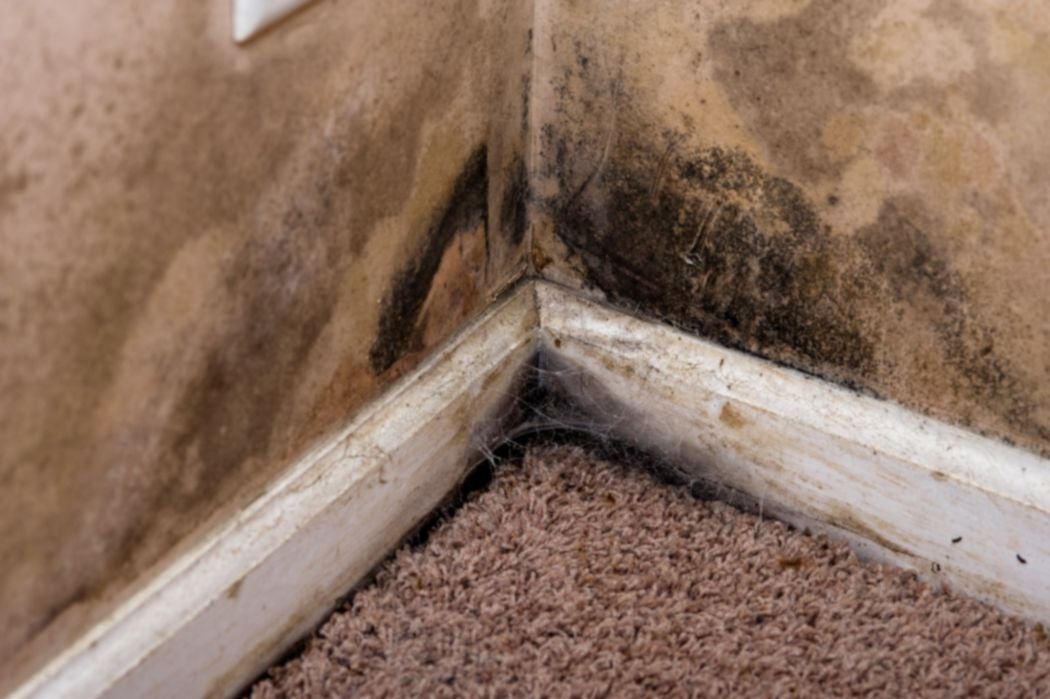
Got a wet basement? Basement moisture is not an uncommon problem. In fact, basements are notoriously dark and damp places. Yet however common it may be, moisture in your basement can be bad news. Unfortunately for homeowners, a little bit of moisture can turn into a big problem. From structural damage to toxic mold that is hazardous to your health, basement moisture can cause major issues for your home. So what exactly are the causes of basement moisture? And more importantly, what can you do to fix it?Let’s start at the beginning. First of all, how do you know if you have moisture in your basement? It is important to be able to identify the warning signs and symptoms. The signs of basement moisture may not be as obvious as a puddle of water on the floor. In fact, there are numerous ways in which moisture can present itself in your basement. Here’s a quick list of a few things to look for:
- Water Trickling Out of the Walls
- Saturated Base of Concrete Walls (a ring of dampness)
- Condensation on the Walls and Floor
- Stained or Blistering Walls
- Damp, Humid Air
- Standing Water on the Floor
- Deteriorating Carpet or Wood
- Rotting Columns, Headers, and Joists
- Odor of Mold or Mildew
If you see any of these signs, you are experiencing moisture in your basement. Now that you know there is moisture, let’s find out where it is coming from.
Basement moisture typically comes from one of 3 sources
Rain or Groundwater
Simply put, this is outside water that makes its way inside. As little as 1 inch of rain can bring 1,250 gallons of water pouring down onto a 2,000 sq. ft. home. Without proper grading, downspouts, and gutters, that water might find its way into your basement.
Interior Moisture Sources
Sometimes the water in our basements originated or was created there. Such sources can include dryers, showers, cooking, humidifiers, and even the moisture from newly-constructed concrete.
Ventilation with Humid, Outside Air
In warmer weather, we often open our basement windows to help ventilate the space. However, when we let humid, outside air into our cool basements, it can condense on the walls and floors.
Now that we know the possible sources of the water, we can determine the cause of the moisture, and ultimately what to do to fix the problem. Check out our list of:
6 common causes of basement moisture and how to fix them
#1. An Interior Water Leak
This may seem like a no-brainer, but you should always check for inside leaks first when trying to identify the cause of moisture in your basement. A water leak can come from numerous places: a shower, a sink, a toilet, a washing machine, a dishwasher, a bad pipe, just to name a few. Sometimes, if the moisture in your basement is located on the ceiling or walls beneath a bathroom or kitchen, an interior water leak is to blame. Find where the moisture is located and determine if something in that area is leaking.
How to Fix It: An interior leak is typically one of the easiest problems to solve. Simply repair the leak (or have a plumber take care of it for you) and with any luck, that was the cause of the moisture, and it will be gone for good.
#2. Ineffective Grading
Rain or groundwater often makes its way into basements due to poor grading. The ground around your foundation should slope away from the house, not towards it. If draining in the wrong direction, water will accumulate against your foundation and eventually make its way inside. This often happens when fill dirt around your foundation isn’t properly compacted. As the dirt settles, the slope changes and water flows toward your house rather than away from it.
How to Fix It: Build up the dirt around your foundation, creating a slope aiming away from the house. This should be a minimum of one inch per foot, for at least 6 feet.
#3. Missing or Defective Gutters and Downspouts
The purpose of gutters and downspouts is to direct rainwater away from the foundation of your home. If those gutters and downspouts are missing, or not functioning properly, rainwater is often directed towards your foundation. As water drains toward your house, it can accumulate in the soil around it. If water accumulates around your foundation, chances are, it will make its way inside into your basement.
How to Fix It: Consider adding gutters if there are none already in place. A minimum of 1 downspout should be placed per every 50 ft. of the roof eave. Extenders should be placed on all downspouts, dispersing water at least 4 ft. away from the foundation. Existing gutters should be cleaned regularly to ensure they are functioning properly.
#4. Cracks in Your Foundation
If you have cracks in your foundation, you can be sure that water will find them and make its way into your basement. In fact, sometimes the water is even the cause of the cracks themselves. If floor joists are not properly connected to the foundation walls, it can allow the walls to move, and in turn, cracks are formed. Water can actually cause cracks in the foundation as well due to poor drainage in the soil.
If water is not directed away from your foundation and accumulates against the foundation walls, and that pressure (hydrostatic pressure) can force the water into the walls, creating cracks. No matter how the cracks formed, if they exist, water can enter your basement through them.
How To Fix It: Depending on the cause of the cracks, your solutions will vary. If hydrostatic pressure (due to water accumulating around the foundation) is the cause of the cracks, repairing your exterior drainage should help to solve the problem. The cracks will still need to be repaired, but the cause should have been repaired. If structural problems caused the cracks, proper footing and connections (straps or anchor bolts) should be put into place to seal the gaps. Click here to learn more about ways to fix cracks in your foundation.
#5. Poor (or Missing) Drain Tile and Sump Pit
Many houses do not have a subsurface drainage system. Basements in older homes often were not intended to be habitable spaces, thus an under-the-floor drainage system wasn’t necessary. More modern homes that do have a drainage system often experience problems with their system. This can range from a clogged pipe, broken connection, or a broken sump pump.
How To Fix It: Unfortunately, problems with your subsurface drainage system, or adding one where there wasn’t one, are a much more serious project than some of the aforementioned solutions. If you think this is where your problem lies, its best to call in the professionals. It involves digging up your flooring and adding a drain system, which leads to a pump that will expel any moisture. Building, or repairing a subsurface drainage system is a complex task, best left to experts with tools and knowledge to get the job done right the first time. Click here to get help with your drainage problems.
#6. Condensation
Basement condensation occurs when warm, moist air comes in contact with your cool basement walls and floor. As the walls cool the warm air, moisture is created, just like condensation on a cold beer on a hot summer day. You’re in luck if the moisture in your basement is coming from condensation, rather than a leak or drainage problem, as these issues are typically much easier and less expensive to resolve.
How To Fix It: There are a few ways to deal with condensation in your basement. First off, check the exhaust of your dryer and drain the central air conditioner. Ensure they are not clogged and are flowing properly. Both can cause a surprising amount of moisture to be put into the air. Next, consider one of the following options:
Basement Exhaust Fan: If you have a bathroom or kitchen in your basement, be sure to install (and use) an exhaust fan. Steam from hot showers and cooking creates lots of moisture than if trapped, can create condensation. Be sure to use the exhaust fan anytime a shower is taken or the stove is used.
Increase Air Circulation: If you only have a minor amount of condensation, increasing your air circulation could resolve the issue. If your basement does not have air conditioning vents, consider adding some. It is typically a relatively easy project. Make sure to keep vents open to keep air flowing. If you don’t have AC, adding a fan, and running it a few hours a day, can help to distribute moisture. If your basement is cluttered, eliminating some of the junk will help air to flow more freely as well.
Insulate Your Basement: Insulating the places where condensation builds up can also help to eliminate moisture. Covering those places, such as walls, pipes, and ducts, with insulation, will help keep warm air from coming in contact with the cool surfaces, thus preventing condensation.
Moisture Warning Signs
If you see signs of moisture in your basement, do not wait to do something about it. The longer the problem persists, the bigger and more costly the repairs will be. For more tips or help with your wet basement, reach out to our team at Triad Basement Waterproofing.
-
9 Reasons Your Basement Might Leak in the Winter
9 Reasons Your Basement Might Leak in the Winter
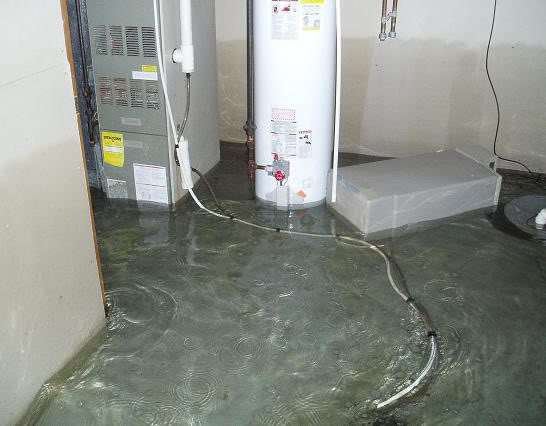
Nothing will put a damper on your holiday plans faster than a flooded basement. No one wants to spend their holiday season mopping up water in an old, leaky basement rather than enjoying time with family and friends. The costly repairs and bothersome inconvenience associated with basement leaks are guaranteed to disrupt your winter plans.
While we typically think of leaks and flooding during times of heavy rain, it is important to remember that these events can occur year-round.
Basement leaks and flooding are actually quite common during the winter months. There are many factors as to why your basement might leak, however all leaks are ultimately caused by an accumulation of moisture.
Keep in mind that moisture doesn’t necessarily come from rain. During the winter months, our homes are surrounded by water in the frozen form: snow. While it is always best to consult a professional to assess your basement’s waterproofing, it is important to understand the basic reasons behind those bothersome basement leaks.
Why Your Basement Might Leak
Below is a list of 8 common reasons why your basement might leak this winter, to help keep you in the know.
#1. Basements Radiate Heat, Melting Snow
While it may be below freezing outside, the temperature in your basement is significantly warmer. Whether your basement is finished or unfinished, it is quite cozy compared to the chilly weather outside. The ground outside your home is cold, frozen, and covered in snow, while the temperature inside your basement is warm and toasty. This causes your basement to radiate heat. Basements typically radiate warmth up to 8” outside the basement walls.
This radiant heat entering the ground causes frozen soil and snow to melt, thus creating and accumulating moisture. As we learned earlier, a build-up of moisture is the basic cause of most leaks. As the snow melts around your basement, moisture builds up and is trapped between the frozen soil and your basement walls and floor. When moisture accumulates with nowhere to go, that’s where the problems begin.
#2. Hydrostatic Pressure
We all know what gravity is; the downward force that weighs things down and keeps them from floating off into the atmosphere. Hydrostatic pressure is the fancy term for the downward pull of gravity. When it comes to a leaky basement, this pressure is a common culprit. As we mentioned in #1, when heat radiated from your basement causes the frozen soil and snow to melt, moisture accumulates and becomes trapped between the ground and your basement walls. Hydrostatic pressure pushes down on that trapped moisture.
As the pressure builds, it can force the moisture through existing cracks and holes in your foundation. Additionally, the pressure can build up so much that it creates new cracks in order to give the moisture somewhere to go. Ultimately, the hydrostatic pressure will force the moisture downward, and into your basement if you don’t have an alternate route for it to travel through.
#3. Eaves, Troughs, and Downspouts Draining Too Close to Your House
Properly functioning and installed eaves, troughs, and downspouts are essential to keep leaks at bay. These elements are designed to reroute water away from your home. However, if these features are improperly designed or not maintained, they have the potential to do more harm than good. When properly installed and functioning correctly, these elements pull water away from your home. The further away from your foundation that the water is sent, the less likely you are to have leaks.
However, if these elements are poorly maintained, installed improperly, or missing altogether, water can be deposited too close to your foundation. If excess water accumulates close to your foundation, hydrostatic pressure can cause it to be forced inside, as it has nowhere else to go. Keep your gutters clean, and downspouts draining away from your foundation (a minimum of 4 feet away) to help prevent this cause of basement leakage.
#4. The Wrong Type of Soil
The soil surrounding your basement plays a large role when it comes to leaks. The right type of soil and irrigation will help water drain properly and pull moisture away from your home. However, the wrong type of soil with improper draining can cause moisture to pool and become trapped against the walls of your basement. Certain types of soil, such as clay soil, can actually prevent leaks and flooding by absorbing moisture and expanding, rather than allowing moisture to collect and build up pressure. If the soil surrounding your basement does not drain properly, we suggest replacing it with clean fill dirt, properly installed, and topped with stone or mulch to prevent erosion.
#5. The Slope Surrounding Your Foundation is Off
No matter what type of landscape your home was built on, the soil surrounding your foundation should always slope away from the home. Improper drainage is one of the most common factors in basement leaks. The soil surrounding the foundation of your home should slope down 6 inches in the opposite direction of the home.
While 6 inches of slope may not seem like much, it guides water away from your foundation, rather than allow it to pool at its base. The further away the water drains, the less likely you are to experience leakage. Make sure there is a clear downward path for water to follow, away from, not towards your foundation.
#6. Cracks in Your Basement Wall and Floor
Water most commonly enters your basement through cracks in the walls and floor. When moisture accumulates outside between the soil and the walls, pressure pushes down on that moisture, causing it to look for a way to escape. As the pressure builds, moisture is pushed through cracks in your walls and floors, resulting in a wet basement. Cracks in basement walls and floors are very common.
As your house settles over time and pressure changes for various reasons, cracks will inevitably occur. Click here to learn more about how and why cracks occur . If not properly repaired, these existing cracks are a direct route, leading moisture straight into your basement. Water will continue to seep through these cracks in the walls and floors until the pressure is relieved or the cracks are eliminated.
#7. Your Sump Pump Isn’t Working Properly
If you have a basement, you most likely have a sump pump. This pump is designed to collect excess water and pull it away from the home. However, if your sump pump isn’t working properly, water will accumulate and potentially flood your basement. A sump pump is installed by creating a hole in the basement floor (the sump pit). When the pit fills with water, the electric pump is activated, pumping the water away from the area.
Sump pumps can fail for various reasons: improper installation, power failure, lack of maintenance, or frozen/clogged drainage lines. Click here to learn more about common sump pump problems that can result in flooding. Remember to always make sure your sump pump is working properly before the wet winter season arrives.
#8. Your Drain is Clogged
While this may seem like an overly simple explanation, you would be amazed at how many leaks and floods can be prevented by simply ensuring your drains are draining properly. Clogged drains can cause water to back up in your pipes, and ultimately overflow into your basement. These clogs can occur in your home’s sewer lines, as well as the municipal sewer lines outside your home.
While you can’t do much to address clogs in the municipal line, take measures to ensure that the lines in your home are flowing freely. If your drains are free of clogs and draining properly, it will help to eliminate the chances of water backing up into your basement.
#9. Leaky Window Wells
While windows allow much-needed light to flow into your basement, they can also allow water to make its way in as well. Windows should be properly sealed and free of cracks. The window wells, the areas around your basement windows, should have proper drainage in place, allowing water to flow away from the home, and not pool in the wells. Keep a close eye on these areas, as they are common culprits in basement leaks.
Preventing Basement Leaks with Triad
As winter quickly approaches, it is important to take measures to prevent basement leaks and flooding. Remember, just because it isn’t raining, it doesn’t mean that water isn’t there. Be sure to take a good look at all 9 factors listed above during your thorough check of your basement. It is much easier to stop a leak before it starts than to repair damage after the fact.
As you begin steps toward waterproofing and winterizing your basement, we encourage you to reach out our team at Triad Basement Weatherproofing. Our team has years of experience in basement waterproofing and are here to assist you as you prepare your home ready for winter. Contact us to learn more about keeping your home dry this winter.
